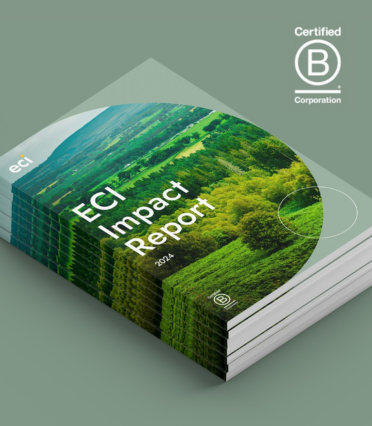As part of our ECI Unlocked program connecting business leaders across the ECI portfolio we recently held our annual summit of commercial leaders. When we surveyed them to ask them about their top challenges, 90% of them cited data and automation, up from 35% this time last year. With the challenge being driven in part by the growth and potential of AI and Large Language Models (LLMs), we welcomed Faculty, OpenAI’s first implementation partner, to talk through some of the use cases for generative AI and then broke into workshops to discuss where we saw the clearest opportunities.
1. Mining unstructured information
- Call analysis: One of the most prevalent examples of ‘lost’ information discussed was call transcripts. As they create high volumes of natural language, they are a great example of where the new generation of LLMs could be harnessed. Sentiment analysis could showcase sales teams’ performance, highlight red flags in accounts, and quickly review calls.
- Easy summaries: Calls can be easily summarised and sent back to clients, saving sales teams time, and boosting conversion as it drives better alignment on needs and actions. Tools can help suggest recommended next best actions to sales teams off the back of this.
2. Chatbots
- Useful high-level support: After years of clunky chatbots that often left customers feeling more frustrated than helped, ChatGPT’s generative natural language has led to a significant upgrade in potential. Being able to quickly surface information will be valuable to customers and free up sales and support teams to focus on delivering higher value outcomes for clients.
- But be warned… The caveat here is that LLMs still surface errors and can hallucinate. So, make sure you are considering the criticality of the comms you’re looking at and how much you can guardrail. Letting a ChatGPT bot run free with your customer service may well be a recipe for disaster. At Moneypenny, keeping a Human in the Loop has proved critical in harnessing the power of ChatGPT. Another caveat is to think about how it is presented. The view in the room was that with a newer generation of bots, it is likely that people don’t realise they are speaking to a bot, but that once they do their satisfaction may decline (even if the quality of their interaction doesn’t!)
3. Deploying IP and case studies fast
- Market intel: It can be difficult to stay on top of market intel, but LLMs can easily be pointed at the right sources to pull out the relevant information for you in a digestible way.
- Sales enablement packs: Create these more efficiently with case studies automatically pulled together. This will make it much easier to bespoke to customer needs.
- Roleplay: If training your team, ChatGPT can easily be used for roleplay, even in the off-the-shelf version. A prompt such as ‘Act as if you are a CTO and I am selling you a software solution’ is an easy way to encourage sales teams to practice.
4. Spinning up stories
- Content creation: Some of the companies in our portfolio have already started using generative AI for blogs, with the caveat that it works most effectively for content repurposing rather than creation from scratch.
- Subject/headlines: People have seen success generating headlines or subject lines, helping to optimise parts of the content journey rather than the whole. Again, this will still need editing and reviewing, back to the Human in the Loop process.
- Personalisation: One of the roadblocks for personalised landing pages and customer journeys has been the capacity to generate enough personalised content for each cohort. As LLMs accelerate that ability, there is more scope to have personalisation at scale than ever before.
- SEO: The downside for you is that SEO content generation will explode. It will mean putting much more emphasis on your backlinks and domain authority, as SEM becomes increasingly competitive as the barriers to entry reduce
5. A picture paints a thousand words
- Death to stock imagery: Rather than trawling through iStock and ending up with the same image as your competitors, generative AI can help you create the image that you’re looking for from scratch. This is likely to be the future of digital imagery, but there are clearly still some knots to sort out. One is ongoing discussions around IP of imagery and the second is…it’s not quite good enough yet. See below the image generated for the prompt “six sales and marketing people discussing the potential for generative AI.” (How many errors can you see?! Answers on a postcard please!)

6. Accelerating feedback loops
- Automated feedback: It is easy to imagine a world now where customer feedback is automatically directed back to marketing and product teams in a digestible way, that supports a rapid innovation environment. For example, imagine your product team seeing a tiered list of the top five complaints about a specific tool in the last month – that would be very hard to get out and quantify at the moment. If you could do this, think about how it might lead to accelerated product fixes and ultimately happier customers.
- Code efficiency: Not only do product teams receive feedback quicker, but they can also use generative AI to create code efficiency, code reviews and code testing. The caveat here is that as with image generation, there are still big question marks around the IP of the code from generative tools. We would currently not recommend using genAI for code generation, but it can still be used for testing and reviewing, helping to speed up the process from problem to solution.
As you may have picked up from the article, the possibilities for sales and marketing teams are clear, but there are also lots of caveats around safety and security that need to be considered. The pace of innovation is so fast it’s important to stay at the forefront, but also, it’s not right for everything, so it’s key to make sure you have the right use case and enough benefit to be worth the investment. But make sure you don’t wait for other competitors to be first-movers on this – it might be too late! A likely development over the next 12 months will be software that has a ChatGPT plugin so that you aren’t having to train your own model but can still leverage the capabilities – so watch this space!


